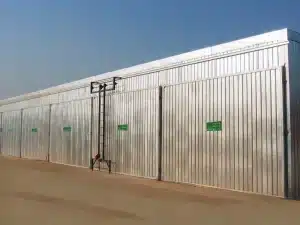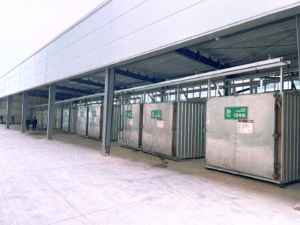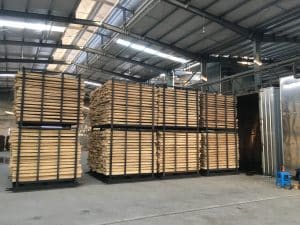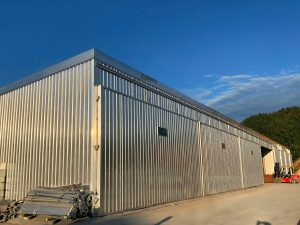
Quick Answer:
The time it takes to kiln dry lumber typically ranges from 1 day to 10 weeks, depending on wood species, thickness, moisture content, and kiln type.
Softwoods (pine, spruce, fir): Can take as little as 3-8 days
- Hardwoods (oak, walnut, Mahogany):
- Standard thickness (e.g., 1-inch thick): Can take several weeks.
- Thick boards (e.g., 2-inch thick or more): Can take 30-60 days or even longer, with some needing up to 8 weeks or more.
Industrial kiln drying ensures consistent moisture content, high-quality lumber, and minimal defects, making it the preferred choice for manufacturers and exporters.
Why Kiln Dry Lumber Matters
Kiln drying lumber is essential for any wood-processing business. Properly dried wood:
Prevents warping, cracking, and mold growth
Ensures stable moisture content for furniture, flooring, and cabinetry
Eliminates insects and fungi, making wood safe for export
Reduces shipping weight and handling costs
Compared to air drying, kiln drying is faster, more reliable, and produces uniform quality, which is critical for industrial-scale production.
6 Factors That Affect Kiln Drying Time
Several variables determine how long lumber will take to reach the desired moisture content (MC), typically 8–12% for indoor use.
1. Wood Species and Density
Softwoods (pine, spruce, fir) dry faster due to their open cell structure, allowing moisture to migrate more quickly.
Hardwoods (oak, maple, walnut, cherry, mahogany) are denser and slower to dry, especially tropical hardwoods with high oil content.
Denser species require longer drying cycles to prevent surface checking and internal stress. Find more at How to Dry Hardwood
2. Board Thickness
Thicker boards retain moisture longer because the core takes longer to release water.
General guideline: Each additional inch of thickness can add 1–3 days in a typical industrial kiln.
Thin boards (<1 inch) can dry quickly, but still require controlled temperature to avoid over-drying.
3. Initial Moisture Content
Green lumber can contain 50–100% moisture, while air-seasoned lumber may start at 25–35% MC.
Higher initial moisture requires longer drying time and careful control to avoid cracks.
Pre-air-drying or pre-stacking for a few weeks can significantly reduce kiln time, especially for hardwoods.
4. Temperature and Humidity
Kiln temperature typically ranges 120–190°F (50–90°C).
Higher temperatures accelerate drying but can increase the risk of defects if humidity is not controlled.
Controlled relative humidity ensures even moisture migration, reduces case hardening, and minimizes surface checking.
5. Airflow and Kiln Configuration
Proper air circulation inside the kiln accelerates moisture removal from all boards.
Kiln configuration matters:
Single-pass kilns: airflow goes straight through the stack, faster for softwoods.
Multi-pass or multi-zone kilns: allow gradual drying, ideal for dense hardwoods.
Kiln type:
Steam kilns – slower for dense hardwoods but help reduce internal stress.
Dehumidification kilns – moderate speed, energy-efficient, consistent MC.
Vacuum kilns – fastest, uniform drying for high-value hardwoods.
6. Wood Stack and Loading
Stack orientation and spacing directly impact drying efficiency.
Sticker spacing (1–1.5 inch between boards) ensures even airflow.
Uniform stacking prevents moisture pockets, reduces warping and case hardening.
Boards at the edges of the stack dry faster than the core; industrial kilns often use rotating or zone-controlled stacks to even out drying.

How to Know When Lumber Is Fully Dried
1. Using a Moisture Meter
The most accurate method.
Aim for 8–12% MC for indoor use, 12–18% MC for outdoor applications.
learn more at How to measure the wood moisture content
2. Visual and Physical Signs
Wood feels lighter.
Ends no longer show dark wet patches.
Boards stop warping or cracking during storage.
Tapping produces a crisp “ring” rather than a dull sound.
Kiln Drying vs Air Drying
| Aspect | Air Drying | Kiln Drying |
|---|---|---|
| Time | 6 months to 2 years | 1 day – 10 weeks |
| Moisture Consistency | Variable | Uniform |
| Pest & Mold Elimination | No | Yes |
| Weather Dependence | High | Low |
| Industrial Use | Limited | Ideal for large-scale manufacturing |
✅ Industrial kilns ensure fast, controlled drying with minimal defects, making them the preferred choice for manufacturers and furniture makers.
Best Practices for Faster, Safe Kiln Drying
Pre-air-dry lumber to reduce moisture content.
Use appropriate kiln type for your wood species.
Maintain consistent temperature and humidity.
Stack boards with spacers for airflow.
Monitor moisture regularly with a digital moisture meter.
FAQ
Q1: Can I kiln dry green wood?
A: Yes, but it may take longer. Pre-seasoning reduces drying stress.
Q2: Does faster drying reduce wood strength?
A: Rapid drying in controlled industrial kilns is safe. Improper fast drying (e.g., heat without humidity control) can cause cracking.
Q3: What is the ideal moisture content for furniture-grade wood?
A: 8–12% MC is optimal.
Q4: Can kiln-dried wood get wet again?
A: Yes. Always store indoors or under cover to prevent moisture reabsorption.
Final Thoughts
Kiln drying is the fastest, most reliable way to produce high-quality lumber for furniture and wood industrial applications.
With modern industrial kilns manufacturers can reduce drying times from months to days, ensuring stable, defect-free lumber for consistent production.
Investing in proper kiln drying technology is essential for quality, efficiency, and profitability in wood manufacturing. Learn more at TECH DRYING.















